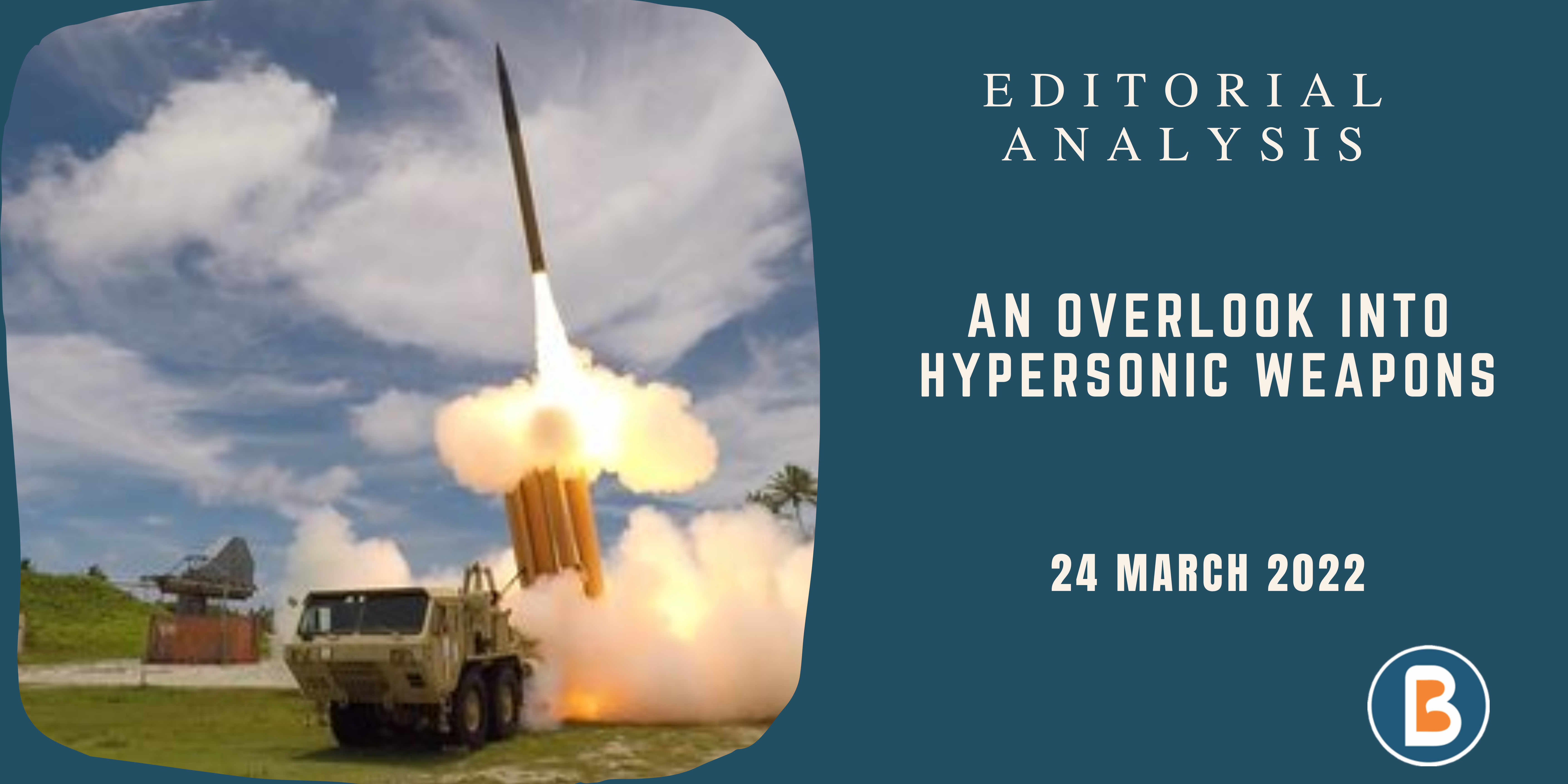Hypersonic Missiles
Context:
- Recently, the Russian Defence Ministry spokesperson Major General Igor Konashenkov said the “Kinzhal aviation missile system with hypersonic aeroballistic missiles destroyed a large underground warehouse containing missiles and aviation ammunition in the village of Deliatyn in the Ivano-Frankivsk region.”
- S. President Joe Biden confirmed that Russia used hypersonic missiles in its offensive in Ukraine.
About Hypersonic Weapons:
- Hypersonic Weapons are those which can fly at speeds of at least Mach 5, five times the speed of sound.
- The speed of sound is Mach 1 and speeds above it are considered as supersonic and speeds above Mach 5 are hypersonic.
- Hypersonic weapons travel within the atmosphere and can manoeuvre midway which combined with their high speeds make their detection and interception extremely difficult. This means that radars and air defences cannot detect them till they are very close and have only little time to react.
Current Status:
- The Financial Times had reported that China tested a nuclear-capable hypersonic missile in August that circled the globe before speeding towards its target, demonstrating an advanced space capability that caught U.S. intelligence by surprise. However, China has denied that it was nuclear capable. This has put the spotlight on the global development of hypersonic weapons by several countries, especially the advancements made by China and Russia.
- In addition to the Chinese test, in early October, Russia announced that it had successfully test launched a Tsirkon hypersonic cruise missile from a Severodvinsk submarine deployed in the Barents Sea which hit a target 350 kms away.
- The U.S. has tested hypersonic weapons for decades. The first vehicle to exceed Mach 5 was a two-stage rocket launched in 1949 which reached a speed of Mach 6.7, under Project Bumper.
- While the U.S. also has active hypersonic development programmes, it is lagging behind China and Russia.
- The U.S. is now looking to accelerate its own programmes, though it is unlikely to field an operational system before 2023. The Pentagon’s budget request for hypersonic research for financial year 2022 is $3.8 billion, up from $3.2 billion it requested a year earlier.
Where India stands?
- Although the United States, Russia, and China possess the most advanced hypersonic weapons programmes, a number of other countries — including Australia, India, France, Germany, and Japan — are also developing hypersonic weapons technology.
- India operates approximately 12 hypersonic wind tunnels and is capable of testing speeds of up to Mach 13
- India is also developing an indigenous, dual-capable hypersonic cruise missile as part of its Hypersonic Technology Demonstrator Vehicle (HSTDV) programme and successfully tested a Mach 6 scramjet in June 2019 and September 2020
- This test was carried out by the Defence Research and Development Organisation (DRDO) and demonstrated the scramjet engine technology, a major breakthrough.
- In a scramjet engine, air goes inside the engine at supersonic speed and comes out at hypersonic speeds.
- A hypersonic version of the BrahMos supersonic cruise missile is also under development.
Source: The Hindu




